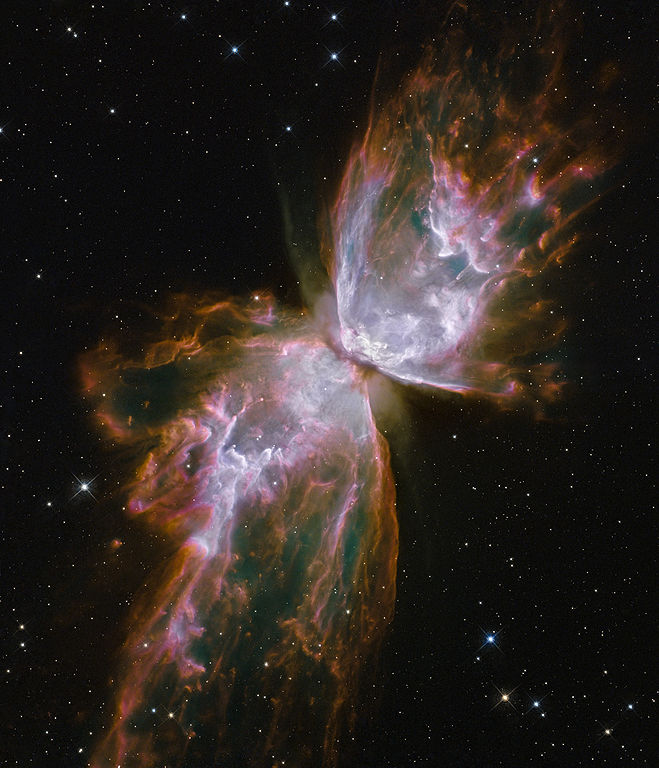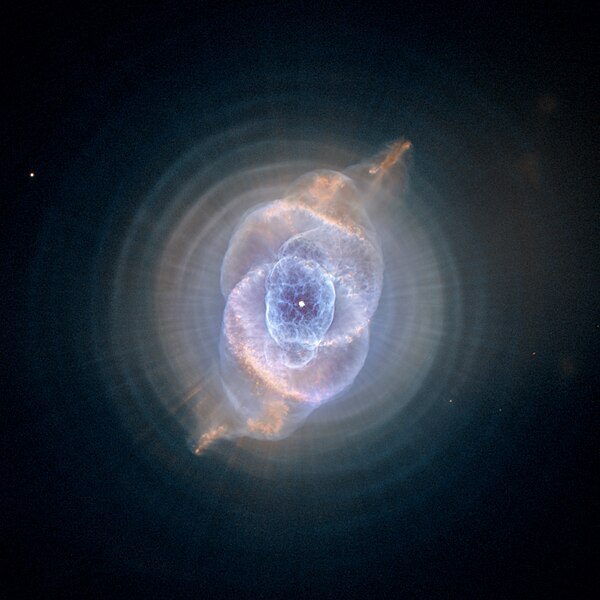Of all the objects in space, nebulae are some of the most beautiful and awe-inspiring. These giant clouds of gas and dust span light-years, and often contain stellar nurseries where new stars (and with them, new planets) are born. Few things can fill me with a greater sense of wonder than a detailed, high-res image of a nebula.
Many of the classic nebulae images come from the Hubble Space Telescope, which has probably done more to bring that sense of wonder to the general public than any other telescope. These images, all of which are released by NASA into the public domain (with very few restrictions), have been shaping the pop culture dialogue about space and astronomy for more than a generation. They’ve certainly had a tremendous impact on me.
There are many different kinds of nebulae. The largest and most stunning ones are mostly diffuse, meaning that they have no clear boundaries where they begin and end. These come in two basic flavors: emission nebulae, which glow on their own due to ionized hydrogen gas, and reflection nebulae, which consist mostly of dust and don’t glow on their own, but reflect the light of nearby stars.
The Witch Head Nebula is a classic reflection nebula. Doesn’t it look eerie? It’s probably because of the way it reflects blue and purple. Many reflection nebulae share those same colors.
The Orion Nebula, one of my personal favorites, is a massive region of star formation visible just below the three iconic stars of Orion’s Belt. It contains large regions of both reflection and emission. In the center of the thickest clouds are dozens of young stars with protoplanetary disks–new solar systems in the process of being born. How many of these will go on to form planets capable of hosting life? Just a few billion years ago, our own sun may have been born in a cloud of gas and dust like this one.
The Helix Nebula, also known as the Eye of God, is apt to make you do a double-take the first time you see it! It looks almost like an eye, watching you from the midst of the heavens. Just as clouds here on Earth tend to form shapes and patterns that look like other things, so do nebulae.
The Cat’s Eye Nebula is another one of those gorgeous space objects that’s apt to give you a double take. Both the Cat’s Eye and the Helix are Planetary Nebulae, which form after a star burns off its outer layer and collapses into a white dwarf. The name is kind of misleading, because they don’t really have anything to do with planets at all–they just look a bit like them, when all you’ve got is a low powered telescope to view them with.
One of the most famous Hubble images is the Pillars of Creation, a close-up image of a stellar nursery within the Eagle Nebula. Stars form when clouds of gas and dust become so dense that they collapse on themselves, creating a gravity well that sucks up more of the surrounding dust and gas. As enough matter accumulates, the pressure and heat at the center grow until the whole thing goes nuclear. When nuclear fusion begins, the newborn star sends out a strong stellar wind that pushes away any remaining dust and gas from the rest of the nebula. After several million years, the whole cloud is blown away, leaving us with a star cluster like the Pleiades.
In the Pillars of Creation, the long, finger-like clouds of the nebula are so dense that they appear dark and opaque, blocking out any light from the other side. These kinds of structures are called molecular clouds, after their ability to form molecules due to their increased density. In this image, though, we can see a group of newborn stars just starting to blow away the cloud’s outer shell. Once the cloud is completely blown away (in just a few thousand years or so), these stars will shine clearly enough for us to see–but for now, they’re hidden inside those pillars where they were born.
The Crab Nebula is particularly fascinating, not only for the stunningly complex structures visible in this image, but because less than a millennium ago, it used to be a star. In 1054, medieval astronomers in Europe, Asia, and the Americas reported the appearance of a new star, bright enough to be seen even in daylight. What they actually saw was a supernova, the spectacular death of a massive star. When a star goes supernova, it explodes with as much energy in just a few days or months as it put out during its entire lifetime.
The outer layers were blasted out to form this nebula, while the inner core collapsed and formed a neutron star–an object so dense that it contains as much as three times the mass of the sun in a sphere roughly the size of New York City. If the supernova is really big, the star might even collapse into a black hole.
Because of how fascinating and gorgeous nebulae can be, it should come as no surprise that they often show up in science fiction. When you have a starship and can travel at ease across the stars, nebulae become a part of the geography of space, just like forests and mountain ranges in a fantasy setting. I haven’t played any of the Mass Effect games yet, but apparently they do this quite a lot. In the re-imagined Battlestar Galactica series, the colonists are able to set a course for Earth after using the Lagoon Nebula to orient themselves relative to the stars of the zodiac. And of course, who can forget the classic battle between Kirk and Khan at the end of Star Trek II: The Wrath of Khan?
In real life, though, it’s much more likely that nebulae like the ones above wouldn’t even be visible if you got up close to them. Even though they’re much denser than other regions of space, they’re still for the most part much less dense than our planet’s own atmosphere. From a distance, they appear bright because we can see the entire structure in one field of view, but up close, it’s possible that you wouldn’t even know you were in one.
That being said, it sure makes for more exciting fiction when the nebulae are these giant mysterious clouds capable of hiding an entire space fleet. And really, who knows what these things are actually like up close? For now, all we can do is watch them from afar. But someday, if science fiction becomes reality, we may be able to be firsthand witnesses to the births and deaths of stars.








Hiya 😉
finally made it via AtoZ
Yours is not a genre I read but your blog is amazing.
The images are fab and it’s really interesting!
auntyamo
http://ficticiousamo.wordpress…
Nebula’s are so pretty! I could look at them all day, and probably repost far too many of them on my facebook page!
I always thought hiding a ship in them seemed a bit far fetched, but as you say, who knows!
Rinelle Grey
Had to come back here with a comment. As I’m editing through my sci-fi story, I just discovered that a ship does hide in a nebula! Had to laugh. Debating whether to change it or leave it. 🙂
Keep it. Especially if one of the characters is named Khan.
Space is so big, all you’ve really got to do is turn off your transmitters and move in a random direction away from your last known position.